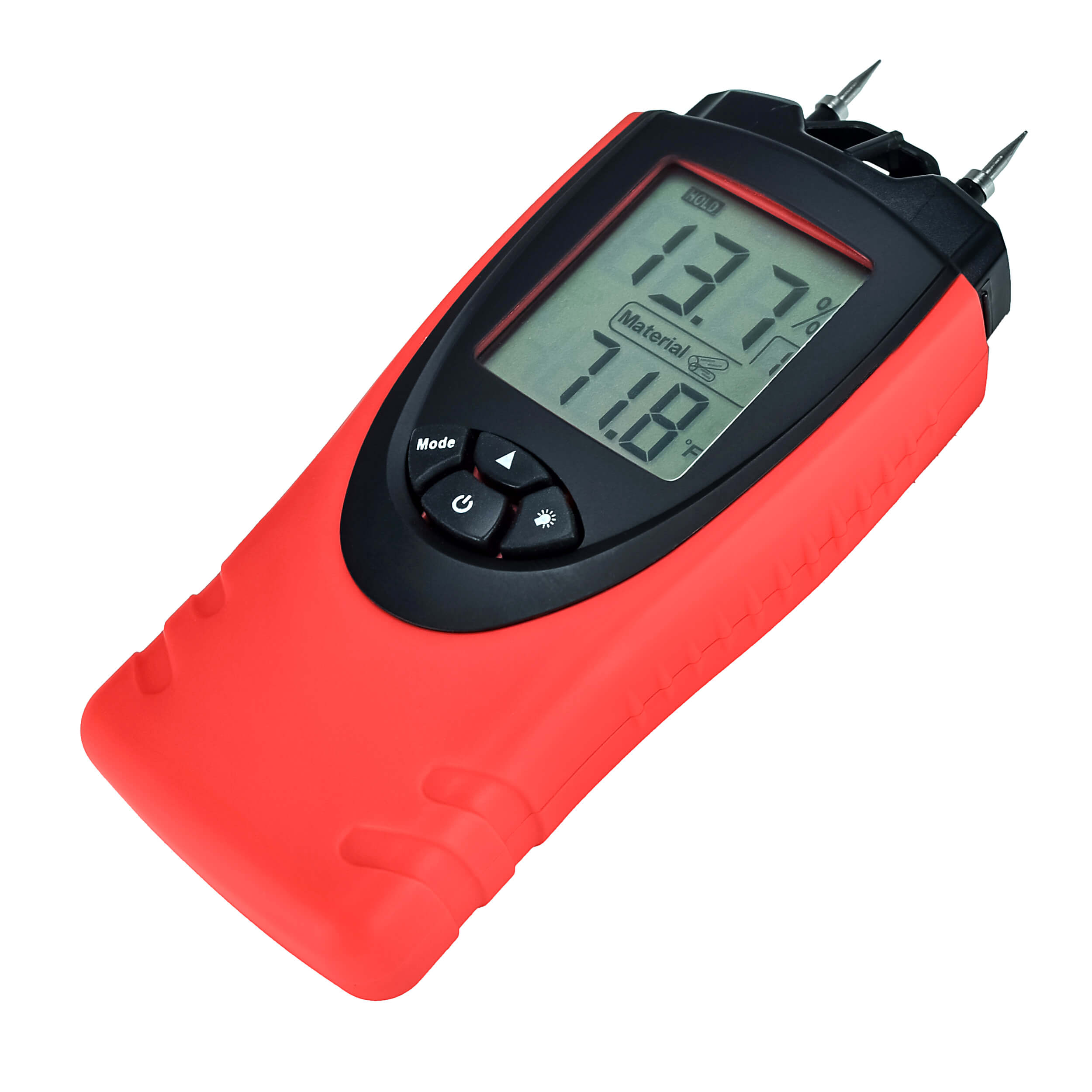How to Use a Moisture Meter to Detect Hidden Water Damages in Your Residential property
Recognizing the Significance of a Moisture Meter in Stopping Mold and Water Damages in Your Home
In the world of home maintenance, the presence of wetness can typically be a silent yet formidable opponent, qualified of triggering prevalent mold and mildew growth and insidious water damage if left untreated. Comprehending the value of a wetness meter in this battle is not just an option however a critical necessity.
Relevance of Moisture Discovery
Reliable dampness detection methods are vital for protecting buildings and avoiding possible mold and mildew development and water damage. Wetness can permeate into various building materials, bring about structural problems and carcinogen. By using a moisture meter, homeowner can proactively recognize areas vulnerable to excess wetness, allowing for timely treatment and reduction methods.
Moisture meters offer precise analyses of wetness degrees in different products such as wood, concrete, and drywall. This data assists in identifying areas of issue, also in hard-to-reach or concealed locations. Early detection of dampness buildup enables timely repair services or modifications to stop further damage.

Just How Moisture Meters Job
Wetness meters play a pivotal function in the proactive recognition of excess wetness, aiding in the avoidance of possible mold and mildew growth and water damage by offering precise readings of wetness degrees in various structure products. These devices work based upon different concepts, relying on their type. Moisture Meter. Pin-type dampness meters, for example, have 2 pins that pass through the material to gauge the electric resistance in between them. When wetness exists, it enhances the product's conductivity, bring about a lower resistance reading. Pinless wetness meters, on the various other hand, usage electromagnetic sensing units to check the product without triggering damage. These sensors send out electromagnetic signals that pass through the product and determine the dielectric properties, showing moisture web content. Some progressed wetness meters pin both combine and pinless technologies for detailed wetness discovery. Comprehending exactly how moisture meters feature is crucial for timely and exact moisture level assessments, making it possible for reliable precautionary actions versus mold and water damages.
Finding Early Indication
Upon initial examination of a residential or commercial property, recognizing subtle indicators of excess wetness becomes critical in the very early discovery of possible mold development and water damages. Water spots can signify leaks or seepage, while peeling off paint or wallpaper may be an outcome of moisture jeopardizing the attachment of these products to the surface. In addition, a rise in allergic reaction signs or respiratory problems amongst passengers might suggest the presence of mold due to excess dampness.
Preventing Mold Growth
Recognizing very early warning indicators of excess wetness within a residential property not just makes it possible for punctual detection of potential mold and mildew growth and water damages but likewise serves as a positive procedure in stopping the proliferation of mold. To properly avoid mold and mildew growth, it is critical to attend to any resources of moisture immediately.
In addition to dealing with moisture resources, maintaining indoor moisture levels below 60% can significantly hinder mold development. Appropriate ventilation, sufficient insulation, and utilizing air conditioning unit or followers can aid control interior moisture levels. Monitoring wetness degrees in locations susceptible to moisture, such as cellars and crawl spaces, utilizing a dampness meter can additionally aid in early detection of raised dampness levels and potential mold growth. By taking proactive measures to prevent excess dampness and mold development, house owners can guard their home and interior air quality.
Advantages of Routine Surveillance
Routine monitoring of moisture levels in a building can play a crucial function address in preserving a healthy and balanced interior environment and stopping prospective mold and water damage. By regularly inspecting dampness degrees, home owners can spot any kind of issues without delay and take required activities to stop mold and mildew growth and water damage. One of the key advantages of normal surveillance is very early detection. By recognizing and addressing high dampness levels at an early stage, homeowners can interfere prior to mold and mildew has the possibility to spread out and develop. This aggressive approach can more save both time and cash in the long run by protecting against considerable mold removal and repair work costs.
Additionally, regular tracking allows home owners to track patterns and patterns in dampness levels gradually. By developing a baseline and monitoring modifications, individuals can determine any type of locations of concern or potential susceptabilities in the home's structure. This data-driven method makes it possible for targeted treatments and maintenance initiatives to address underlying concerns prior to they intensify into even more substantial issues. Ultimately, the constant monitoring of moisture levels encourages home owners to safeguard their residential property, secure their health and wellness, and protect the honesty of their indoor setting.

Final Thought

By using a wetness meter, residential property proprietors can proactively identify locations prone to excess moisture, allowing for timely intervention and reduction approaches.

Checking wetness levels in areas vulnerable to moisture, such as cellars and creep rooms, using a dampness meter can also help in very early discovery of elevated moisture degrees and potential mold and mildew development. (Moisture Meter)